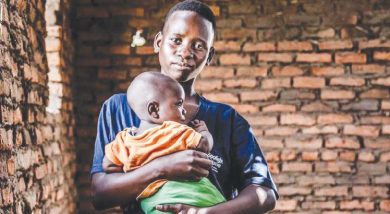Closing Chitipa’s fishy gap
Water bodies cover a third of Malawi’s territory, but the rapidly-growing population is not consuming enough fish to stay healthy.
As catches in the water bodies such as Lake Malawi are falling, the country requires new sources to satisfy its rising fish demand.
Against this background, the Food and Agriculture Organisation (FAO) of the United Nations is supporting communities with integrated fish farming strategies to improve their nutrition, income and livelihoods.
Chitipa, at the northern tip of the country, is one of the target districts.

In the hilly district mostly associated with livestock production than fish farming, communities are eager to reap the benefits of fish farming.
With support from FAO in partnership with the Government of Malawi and Chitipa District Council, the farmers have dug a 300-square metre pond which plays home to more than 5 000 fingerlings of chambo (tilapia).
“From the fingerlings, we expect to harvest not less than 800 kilogrammes within six months. This is likely to bring us not less than K2.4 million,” says Serah Mfungwe, from Masyesye Village in Traditional Authority (T/A) Mwaulambia.
Although fish farming is new in the area, the community already sees a bright future.
Mfungwe is a member of Mwandaje Care Group.
There are three care groups in the border district whose nutrition demonstration centres have fish ponds dug and stocked with support from Afikepo, a nutrition programme which promotes crop and diet diversification.
According to Mfungwe, plans are under way to establish smaller groups in winter which would help to support more people in the district.
Similar fish farming initiatives are underway in Nkhata Bay and Mulanje, with a total of 10 ponds dug.
Mfungwe, a mother of five, grows maize and beans to support her family.
She sees fish farming as a viable income generator that will improve the livelihood and economic status of her household and care group.
The new activity in her area also guarantees her family and the care group members a better source of protein.
“I see fish farming helping me and my family improve our nutrition status and that of the care group. The fish sales will enhance our household income status,” she explains.
Malumbo Nyirongo, Chief of Agriculture, Environment and Natural Resources at Chitipa District Council, says stunting is high in the district because the uptake of animal protein remains low.
This is ironic as more than 70 percent of households own some type of livestock.
The agricultural expert expects the inclusion of fish in the diets as one of the solutions to the low-height-for-age indicator for severe malnutrition.
He explains: “Through surveys, we have found that although the district has a lot of livestock, consumption is low, especially in rural households.
“This is partly because many people keep large animals such as cows and goats which cannot be slaughtered anyhow for relish. This is the reasons we embarked on fish farming in selected communities.”
The introduction of fish for improved diets is seen as a boon in the fight against malnutrition, which denies children a healthy start in life.
FAO head of coordination Luis Amaya Ortiz says: “The inclusion of fish in one’s diet brings unique nutritional benefits. Fish, being a source of essential nutrients and high-value proteins, are key elements in the fight against malnutrition and micronutrient deficiencies.
“The project is supporting multiple interventions to support community outreach groups, called care groups, with construction of fish ponds and other stock rearing activities. This is empowering community members to do the same at household level, where we want to make an impact.”
From the positive response by communities, it appears fish farming has potential to flourish in Chitipa and improve the beneficiaries’ nutrition and income security.
This gives Mfungwe hope that in the years to come, Chitipa will not only be associated with large herds of livestock but also inland fish production.
“The fish we eat in Chitipa currently comes from the districts along Lake Malawi, especially Karonga. Therefore, producing our own will make it more accessible and affordable for many communities in our mountainous district,” she says.
The activities to enhance nutrition and income security are supported by Kulima and Afikepo programmes with funding from the European Union through the United Nations Children’s Fund (Unicef).
The five-year programmes are empowering the locals to improve agricultural productivity and nutrition security.
Apart from Chitipa and Nkhata Bay, other target districts are Karonga, Mzimba, Kasungu, Nkhotakota, Salima, Chiradzulu, Thyolo and Mulanje.
Kulima and Afikepo mostly target households with children aged below five, pregnant women, breastfeeding mothers and adolescent girls.
The change agents include agricultural extension workers as well as community-based volunteers who promote the recommended farming and dietary practices in their neighbourhoods.





